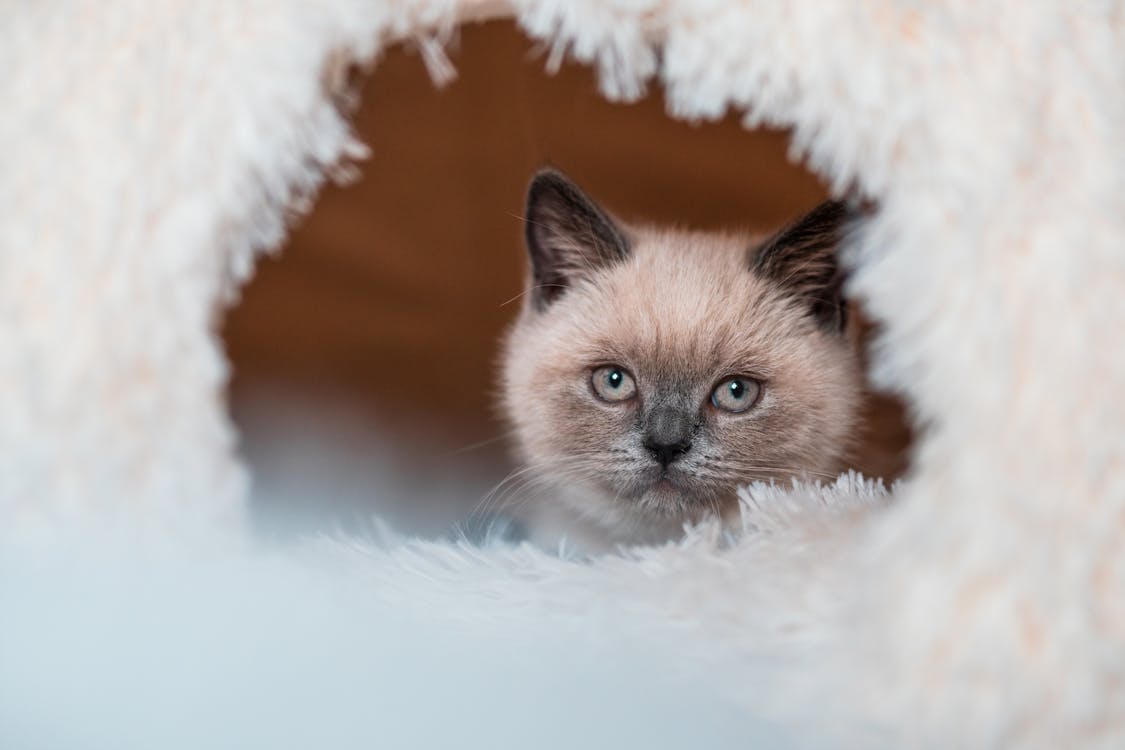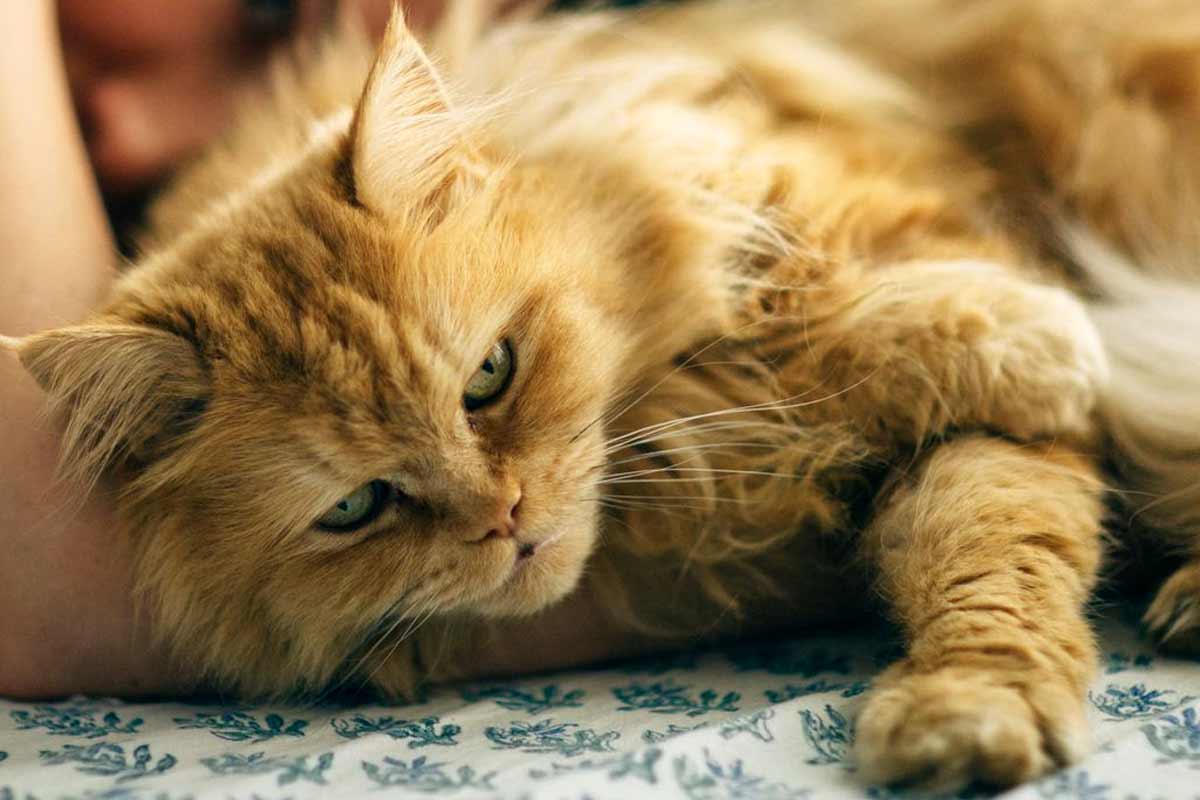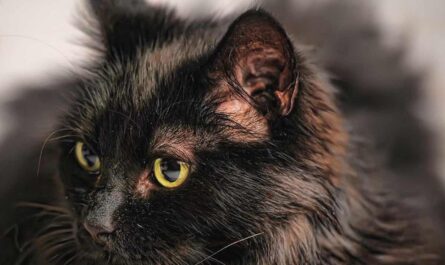How to tell if my cat is in pain after neutering? What you can do? Remember that purring bundle of fluffy joy who strutted out of the vet’s office tail held high after their neutering? Now, they seem a little subdued, perhaps less playful, and maybe even avoiding your usual cuddle sessions. It’s natural to worry if our feline companions are feeling under the weather, and post-neutering pain is a concern many cat owners share. But fear not, fellow cat parent! This guide equips you with the knowledge and tools to become a pain detective for your furry friend, ensuring a smooth and comfortable recovery.
Think of yourself as a cat whisperer, deciphering your feline’s subtle cues. While they can’t tell us exactly what’s bothering them, their behavior speaks volumes. So, let’s delve into the world of post-neutering pain, learn to differentiate normal discomfort from potential complications, and discover ways to bring back those playful purrs in no time.
Demystifying the Discomfort: A Peek into Post-Neutering Pain
Neutering, while a routine procedure with immense benefits for your cat’s health and behavior, does involve some post-operative discomfort. The incision site itself can feel tender, and internal inflammation around the surgery area might cause temporary aches. Just like us, cats experience pain differently, with factors like age, overall health, and individual sensitivity playing a role.
But how do we distinguish between normal recovery discomfort and potential complications? Worry not! We’ll equip you with a handy toolbox of signs to watch out for:
- Changes in Activity: Is your usually sprightly kitty suddenly preferring to lounge around? Has their playful spirit dimmed, replaced by a more lethargic demeanor? These shifts in activity level can be indicators of pain.
- Appetite and Hydration: A temporary dip in appetite is normal, but persistent disinterest in food or water could signal something more. Keep an eye on their eating and drinking habits.
- Litter Box Habits: Pain can sometimes lead to changes in litter box usage, like urinating outside the box or straining to go. If these issues persist, it’s best to consult your veterinarian.
- Grooming and Hygiene: Does your cat seem less interested in their usual meticulous grooming routine? Excessive licking around the incision site could be a sign of discomfort or infection.
- Vocalizations and Behavior: Unusual hissing, yowling, or aggression can be a red flag, as can hiding or avoiding interaction. Remember, even the cuddliest cat might become more sensitive while experiencing pain.
It’s important to remember that these signs can also have other causes, but if you notice any concerns, don’t hesitate to reach out to your veterinarian. They have the expertise to assess your cat’s situation and provide the best course of action for a speedy and comfortable recovery.
So, stay tuned, fellow cat detectives! In the next section, we’ll explore ways to soothe your feline friend’s discomfort and create a pain-free haven for their recuperation. Remember, a happy and pain-free kitty means a happy and worry-free cat parent, and that’s the purrfect outcome we’re all aiming for!
The Telltale Signs: Recognizing Feline Pain After Neutering
As loving cat owners, we want nothing more than our furry companions to feel comfortable and content. After neutering, which is a common surgical procedure for male cats, it’s natural to worry about their well-being and watch for any signs of pain or discomfort. While cats are skilled at masking their feelings, there are several telltale signs you can watch for to understand how your feline friend is feeling.
Behavioral Changes: Clues Your Cat Might Be Hurting
- Withdrawal and Hiding: Is your usually social cat suddenly seeking solitude, hiding under furniture, or avoiding your touch? This change in behavior could indicate discomfort or pain.
- Decreased Activity: Imagine your usually playful kitty lounging listlessly instead of chasing feathered toys or climbing their favorite cat tree. Reduced activity can be a sign of pain after surgery.
- Litter Box Avoidance: Changes in bathroom habits, like avoiding the litter box or urinating outside it, can sometimes be linked to pain, especially if associated with discomfort while using the litter box.
- Excessive Grooming: While cats are naturally fastidious creatures, excessive licking or biting at the incision site could indicate irritation or pain.
- Aggression or Vocalizations: An otherwise friendly cat may become grumpy or even hiss if touched near the incision site. Unusual vocalizations like moaning or yowling can also be signs of pain.
Physical Indicators: Beyond Behavior
- Lethargy and Weakness: Does your cat seem more tired than usual, lacking their typical energy and zest for life? Lethargy after surgery is expected, but excessive sleepiness could indicate pain.
- Appetite Loss or Picky Eating: A healthy cat usually enjoys mealtime, but if they lose their appetite or become picky after surgery, it could be a sign of discomfort.
- Vomiting or Diarrhea: While occasional digestive issues can happen, persistent vomiting or diarrhea after neutering requires a visit to the vet, as it might indicate pain or other complications.
- Excessive Panting: Rapid breathing isn’t normal for cats, and excessive panting can be a sign of pain or discomfort.
- Changes in Posture or Movement: Is your cat walking stiffly, avoiding jumping, or showing difficulty using the litter box? Changes in posture or movement can indicate pain at the incision site.
Decoding Subtle Cues: The Unspoken Language of Cats
Remember, cats are masters of subtlety, and sometimes the signs of pain can be nuanced. Watch for changes in their body language, like flattened ears, a hunched posture, or tense muscles. Pay attention to their facial expressions, such as dilated pupils or squinting eyes. Even subtle vocal changes, like softer meows or growls, can offer clues about their comfort level.
By understanding these behavioral and physical signs, you can become a better detective of your cat’s well-being and provide the necessary care and support after neutering. Remember, early intervention is key, so don’t hesitate to reach out to your veterinarian if you have any concerns.
Beyond the Obvious: Exploring Hidden Pain in Your Purrfect Pal
While your feline friend might not yelp or whimper like a dog, that doesn’t mean they’re immune to experiencing pain after neutering. Cats are often masters of disguise, masking their discomfort with impressive stoicism. This can make it tricky for even the most attentive pet parent to discern if their kitty is feeling under the weather. But fear not, fellow cat guardian! By delving beyond the obvious signs and becoming a keen observer of your feline’s overall well-being, you can ensure they receive the prompt attention and TLC they deserve during their recovery journey.
Silent Sufferers: Unveiling the Clues Hidden in Plain Sight
Cats, with their independent nature and innate ability to self-heal, have perfected the art of hiding their vulnerabilities. Unlike their canine counterparts who might vocalize their discomfort, our feline friends tend to express pain in more subtle ways. So, instead of waiting for an obvious ouch or whimper, keep your eyes peeled for these telltale signs of hidden hurt:
- Changes in Appetite: Is your usually ravenous kitty suddenly turning up their nose at their favorite kibble? A decreased appetite, especially if it persists for more than a day or two, could be a red flag for post-neutering discomfort.
- Lethargy and Listlessness: Has your normally playful pouncer become a couch potato overnight? A sudden dip in energy levels or a reluctance to engage in their usual activities could indicate pain or discomfort.
- Litter Box Blues: Is your usually meticulous kitty having trouble using their litter box, or perhaps eliminating outside the designated area? Changes in litter box habits, like urinating more frequently or avoiding the box altogether, can be signs of pain, especially if accompanied by straining or discomfort.
- Grooming Gone Awry: Cats are meticulous groomers by nature, so any noticeable changes in their grooming habits could signal an underlying issue. Excessive licking around the incision site, neglecting other areas, or matted fur can all be signs of pain or discomfort.
- Changes in Interaction: Is your normally cuddly companion suddenly giving you the cold shoulder? While some aloofness post-surgery is expected, significant shifts in your cat’s desire for affection, whether becoming more clingy or withdrawn, could indicate pain or anxiety.
A Holistic Approach: Looking Beyond the Bandage
Remember, pain can manifest in ways beyond physical symptoms. Consider your cat’s overall well-being and look for any changes in their usual behavior and routines. These seemingly unrelated shifts can offer valuable clues about their comfort level:
- Sleep Patterns: Is your cat sleeping more or less than usual? Restlessness or difficulty finding comfortable positions could indicate pain or discomfort.
- Playfulness and Engagement: Has your usually energetic kitty lost their interest in interactive games or toys? A noticeable decrease in playfulness can be a sign of underlying pain.
- Vocalizations: While not as common as yowls or meows, subtle changes in vocalizations like hissing, growling, or even excessive purring can sometimes indicate discomfort.
- Body Language: Pay attention to your cat’s body language for signs of pain or anxiety. Hunched posture, flattened ears, dilated pupils, or twitching tail can all be indicators of discomfort.
The Power of a Pet Parent’s Intuition
You know your cat better than anyone else. If you have a gut feeling that something is off, even if the signs seem subtle, don’t hesitate to trust your intuition! Early intervention is key to ensuring your feline friend’s comfort and speedy recovery. Remember, it’s always better to be safe than sorry. So, if you’re concerned about your cat’s well-being after neutering, schedule a visit with your veterinarian to discuss your observations and get professional guidance.
By staying attuned to your cat’s subtle cues, being mindful of their overall well-being, and trusting your gut instinct, you can become a pain detective extraordinaire for your furry friend. Remember, a purring, content cat is a happy cat, and with your love, attentiveness, and proactive approach, you can ensure a smooth and comfortable recovery for your feline companion.
Comforting Your Cat: Home Management Strategies for a Purrfect Recovery
After your feline friend undergoes neutering, their comfort and well-being are your top priorities. While they may seem like tough cookies with nine lives, even the bravest kitty needs a little extra TLC during recovery. Here’s how to create a haven of healing and help your furry pal purr their way back to their usual playful self:
Crafting a Cozy Cat Sanctuary
Imagine your cat’s ideal recovery zone: a quiet, comfy nook with their favorite soft bedding, familiar toys, and minimal disruptions. Tuck it away from busy areas and loud noises, creating a sense of calm and security. Remember, less is often more during this time, so avoid introducing new furniture or scents that might overwhelm their senses. Bonus points for a sunny spot where they can bask in the healing warmth of natural light.
Pain Management with a Purr-fect Dose
Your veterinarian will prescribe pain medication to ease any discomfort your cat might experience after surgery. It’s crucial to administer these medications exactly as instructed, following the dosage and frequency guidelines carefully. Remember, even a small missed dose can leave your cat feeling under the weather. Think of it as giving your feline friend a magic potion that helps them feel their best and bounce back quickly.
Gentle TLC: The Power of Pawsitive Vibes
Sometimes, the best medicine is a good dose of love and attention. Offer your cat gentle petting, soothing words, and quiet companionship while respecting their boundaries. If they seem withdrawn or prefer some alone time, that’s perfectly okay! Let them set the pace for interaction. Remember, even a soft purr or a gentle head nudge can work wonders in showing your cat you care.
Keeping a Close Eye: Monitoring the Purr-ameters of Health
While your cat might not be able to tell you exactly how they’re feeling, their body language and behavior can offer valuable clues. Monitor their temperature, breathing, and appetite for any changes. A slight increase in temperature or a decrease in appetite could indicate potential issues. If you notice any significant changes or red flags, don’t hesitate to contact your veterinarian – they’re always happy to help!
Alternative Therapies: Exploring the Purr-sibilities
With your veterinarian’s guidance, you can explore complementary therapies to further enhance your cat’s comfort. Gentle warmth therapy with a heating pad (set on low) can offer soothing relief, while acupressure points massaged with gentle pressure might ease discomfort. Calming diffusers with cat-friendly essential oils like lavender can create a relaxing atmosphere. Remember, these options are meant to complement, not replace, veterinary-prescribed pain medication.
By creating a safe and loving environment, administering medication responsibly, and keeping a watchful eye on your feline friend’s well-being, you can ensure their recovery is as smooth and purrfect as possible. Remember, a little extra care goes a long way in showing your cat just how much you love them, and soon they’ll be back to their playful, mischievous selves, ready to shower you with purrs and head nudges.

When to Seek Help: Navigating Veterinary Support with Confidence
Remember, your furry friend’s well-being is always the top priority after any medical procedure. While some discomfort following neutering is expected, it’s important to know when it’s time to seek professional guidance. Here’s how to navigate veterinary support with confidence:
Early Intervention: Your Cat’s Comfort Matters Most
Think of your cat’s comfort level as a valuable compass. If you have any concerns about their pain level or behavior after neutering, don’t hesitate to reach out to your veterinarian promptly. Early intervention can make a big difference in their recovery and overall well-being. Remember, even subtle changes can be important clues, so trust your instincts and seek help if something feels off. How AI, ChatGPT maximizes earnings of many people in minutes
Preparing for the Visit: Be an Empowered Cat Parent
When you call your veterinarian, gather as much information as possible beforehand. This will help them assess the situation and provide the best care for your feline friend. Jot down any observed signs of discomfort, changes in behavior, appetite, or litter box habits. Additionally, note the date and time of the neutering procedure, any medications your cat is taking, and any other relevant details you can recall. Being an informed and prepared pet parent empowers you to advocate for your cat’s needs effectively. Motivation – Mind – Success – Thinking – Productivity – Happiness
Veterinary Assessment: Unveiling the Puzzle Pieces
During the visit, your veterinarian will perform a thorough examination of your cat, paying close attention to the incision site and any other areas of concern. They might also recommend diagnostic tests like blood work or pain assessments to gain a clearer picture of your cat’s condition. Remember, these tests are not meant to punish your feline friend, but rather to help your veterinarian piece together the puzzle and determine the best course of treatment.
Treatment Options: Tailored Solutions for Feline Comfort
Based on the diagnosis, your veterinarian will recommend a treatment plan specifically designed to address your cat’s needs and manage their pain effectively. This might include pain medication, additional rest and recovery measures, or even dietary adjustments. Trust your veterinarian’s expertise and follow their instructions carefully to ensure your cat receives the optimal care they deserve. Business – Money Making – Marketing – E-commerce
Addressing Complications: Proactive Care for Peace of Mind
While neutering is a routine procedure, it’s important to be aware of potential post-surgical complications, although these are rare. Signs like excessive bleeding, swelling, redness, or discharge around the incision site, or difficulty urinating or defecating, warrant immediate veterinary attention. Remember, early intervention is crucial for addressing any potential complications and ensuring a smooth recovery for your feline friend.
By understanding the importance of timely veterinary intervention, being prepared for your cat’s checkup, and trusting your veterinarian’s expertise, you can navigate this phase with confidence and ensure your furry companion receives the care and comfort they deserve throughout their recovery journey. Remember, a happy and healthy cat is a purrfectly content cat, and you play a vital role in making that happen!
Beyond Recovery: Long-Term Pain Management for Your Purrfect Pal
While your feline friend bounces back from their neutering procedure, it’s important to remember that recovery is a journey, not a destination. Even after the initial incision heals, there’s a chance your kitty might experience lingering discomfort or even develop chronic pain. Don’t fret, though! By staying vigilant, communicating openly with your veterinarian, and implementing some easy preventative measures, you can create a purr-fectly comfortable environment for your furry friend’s long-term well-being. Health books, guides, exercises, habits, Diets, and more
Chronic Pain Awareness: Keeping a Watchful Eye
Just like humans, cats can experience chronic pain after surgery. While it’s less common than short-term discomfort, it’s crucial to be aware of the signs so you can address them swiftly. Keep an eye out for subtle changes in your cat’s behavior, such as:
- Reduced activity: Your normally playful kitty might become more lethargic and less interested in their usual playtime antics.
- Changes in litter box habits: Straining during urination or defecation, using the box less frequently, or even eliminating outside the litter box could indicate pain or discomfort.
- Excessive grooming: While cats are naturally meticulous groomers, excessive licking or biting at a specific area, especially near the incision site, might signal lingering pain.
- Mood changes: Grumpiness, hissing, or hiding more often than usual could be their way of communicating discomfort.
- Changes in posture or movement: Difficulty jumping, stiffness in their gait, or reluctance to climb furniture could hint at pain affecting their mobility. Fitness – Meditation – Diet – Weight Loss – Healthy Living – Yoga
Remember, every cat is unique, and their way of expressing pain might differ. If you notice any of these signs, even if they seem subtle, don’t hesitate to schedule a follow-up appointment with your veterinarian. Early detection and intervention are key to managing chronic pain effectively and ensuring your kitty enjoys a comfortable life.
Maintaining Open Communication: Your Vet is Your Partner
Think of your veterinarian as your partner in crime – or should we say, purr-tner – in crime! Keeping them informed about any ongoing concerns or behavioral changes, no matter how seemingly minor, is vital for optimal pain management. During checkups, openly discuss your observations, and don’t shy away from asking questions. Remember, there’s no such thing as a silly question when it comes to your cat’s well-being!
Your veterinarian can assess your cat’s condition, rule out other potential causes for their discomfort, and tailor a pain management plan specifically for their needs. This might involve pain medication, alternative therapies like acupuncture or laser therapy, or even environmental adjustments to make their surroundings more comfortable. RPM 3.0 – 60% CONVERSION & Money for Affiliate Marketing
Preventive Measures: Building a Pain-Free Future
While you can’t completely eliminate the possibility of chronic pain, there are steps you can take to minimize its impact and promote long-term comfort for your feline friend. Here are some purrfectly doable strategies:
- Weight management: Maintaining a healthy weight reduces stress on their joints and muscles, which can contribute to pain.
- Proper exercise: Regular playtime and physical activity, tailored to your cat’s age and abilities, help keep them limber and mobile.
- Environmental enrichment: Create a stimulating environment with scratching posts, climbing structures, and interactive toys to keep them mentally and physically engaged.
- Cozy havens: Provide multiple comfy napping spots with soft bedding and consider using heating pads (supervised) for extra warmth and relaxation.
Remember, even small changes can make a big difference! By incorporating these tips into your cat’s routine, you’re actively promoting their long-term well-being and creating a pain-free future for your furry best friend. Cat accessories on Amazon
Conclusion: A Purrfect Partnership for a Happy Cat
Remember, you and your veterinarian are a team dedicated to ensuring your cat’s comfort and well-being. With your love, attentiveness, and proactive care, combined with your veterinarian’s expertise, you can empower your feline friend to heal comfortably and purr their way back to a happy, pain-free life. After all, the joy and companionship our cats bring deserve nothing less than our unwavering commitment to their health and happiness. Now go forth, shower your kitty with love and purrs, and watch them blossom into their most playful, pain-free self!
Other Interesting Articles
- How to Stop A Cat from Spraying after Neutering: 11 Tips
- How to Tell if A Cat is in Pain from Arthritis: How to Help
- 14 Reasons Why Is My Cat Making Weird Purring Noises
- How to Take Care of A Kitten without A Mother: 21 Tips
- What Is Caterwauling? 10 Most Common Reasons Cats Do It
- How to Introduce A Cat To A New Home When Moving?
- Cat Declawing: Tips, FAQs, Health, Alternatives, Pros, Cons
- New Cat? 20 Common Warning Signs When Introducing Cats
- 23 Sure Signs Your Cat May Be in Pain and How to Help It
- How to Stop A Neutered Cat From Spraying: 15 Simple Tips
- 12 Signs Your Cat May Require a Feline Companion
- Feline Pheromones: 12 Ways Calming Cat Pheromones Work
- Do Cats Feel Lonely without Other Cats? 6 Signs of Loneliness
- 10 Reasons Why Cats Hiss: How To Stop The Behavior
- Cat Feeding: Tips, Guide, FAQs, Chart for Kittens to Veterans
- Cat Vaccinations: Schedule, FAQs, Side Effects, and Costs
- 44 Strange, Weird, and Random Cat Behaviors Explained
- 21 Pro Tips for Fostering Kittens: Essential Care Guide
- 18 Cat Sounds Your Feline Makes: What They Mean
- Sexing Kittens: How to Tell, Determine the Sex of Your Kitten



